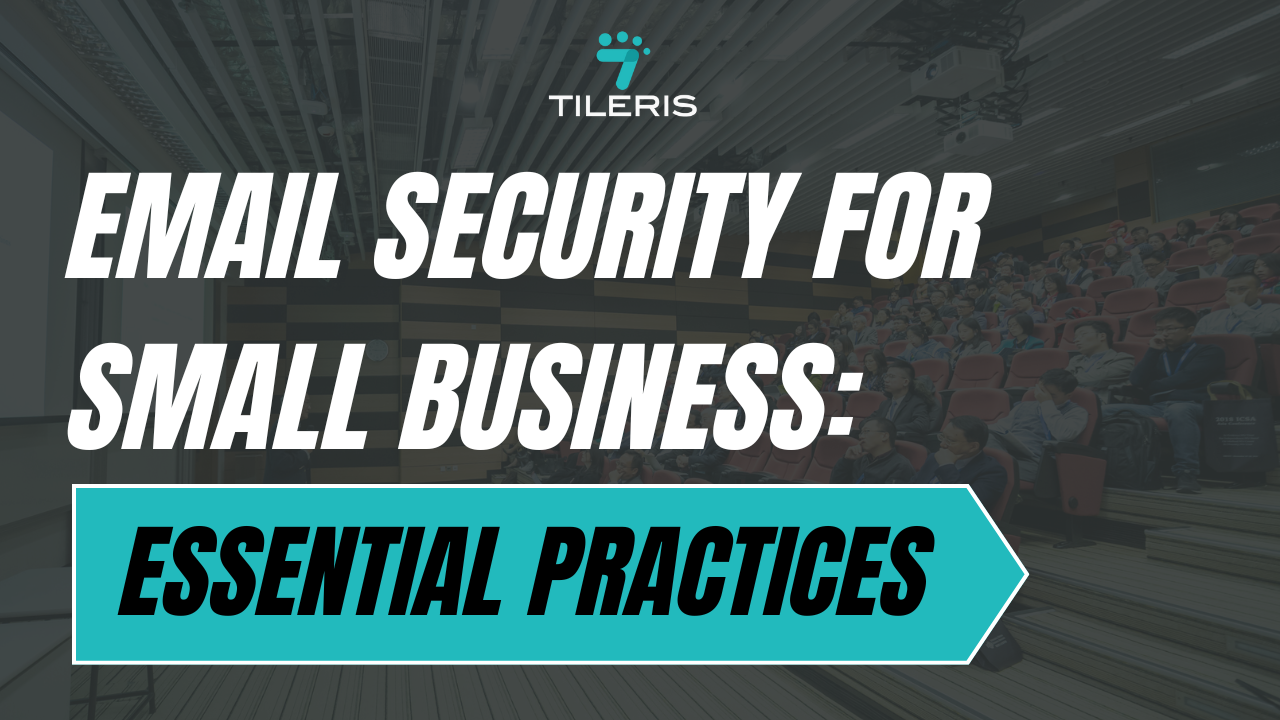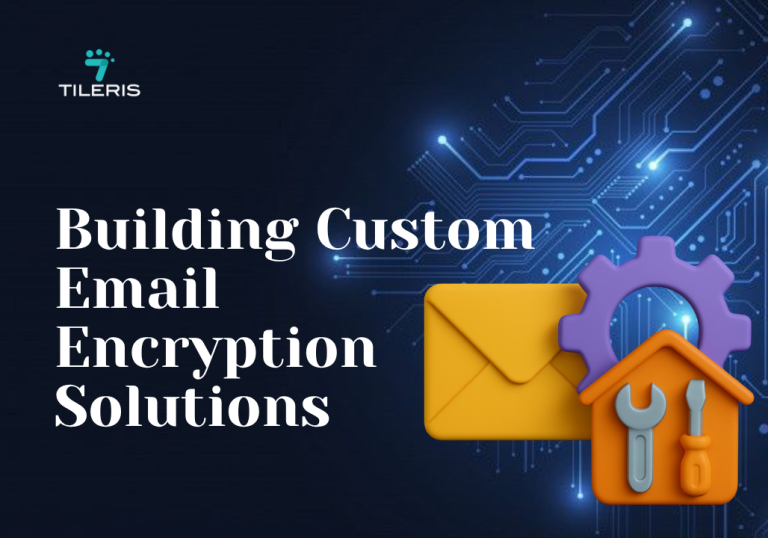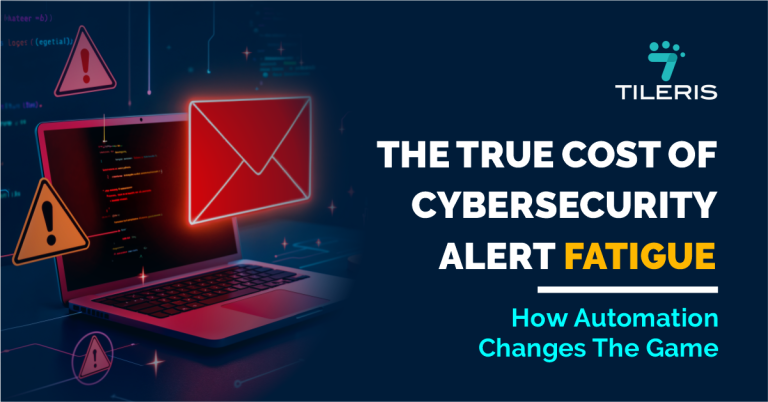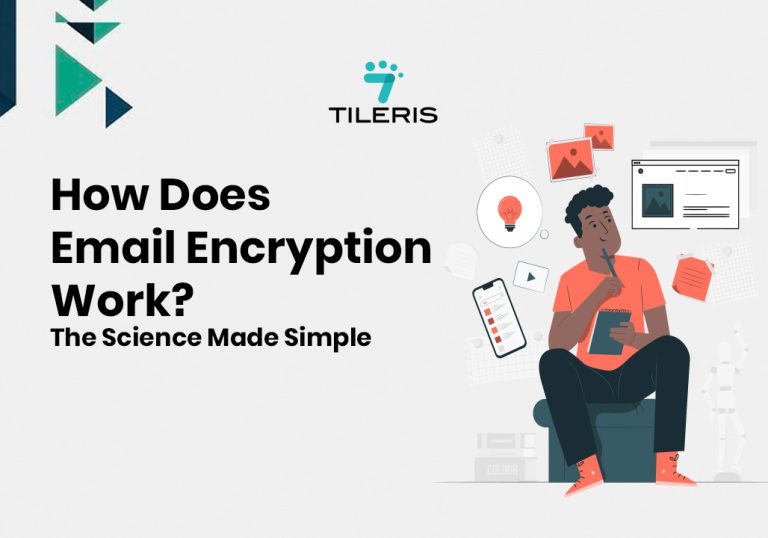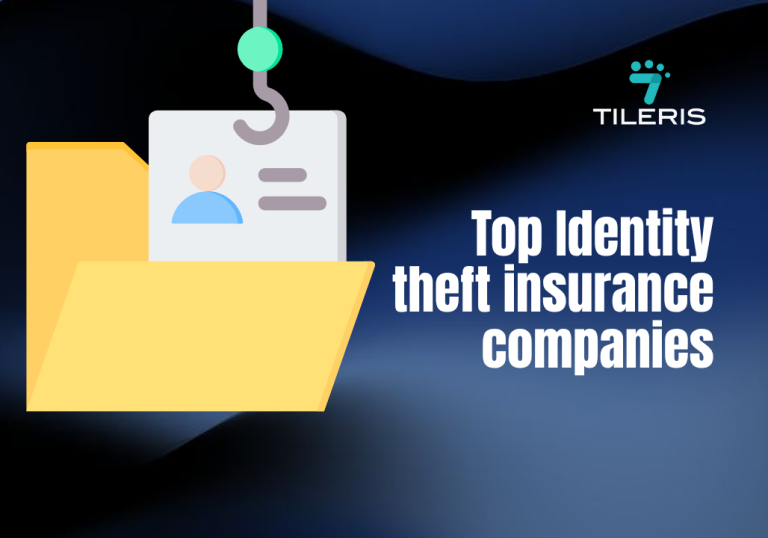Email Security For Small Business: Essential Practices
Introduction
Imagine a scenario where you arrive at your office one morning, eager to tackle the day’s tasks, only to find your inbox flooded with customer complaints about strange emails they’ve received – emails that appear to be from your company, but contain suspicious links and requests for sensitive information. Panic sets in as you realize your business email has been compromised. This alarming scenario highlights the importance of email security for small businesses.
In today’s digital landscape, your business email is far more than just a tool for correspondence, it’s the gateway to sensitive data, financial transactions, and your hard-earned reputation. Neglecting its security is no longer an option as it is a significant risk that can lead to financial losses, reputational damage, and operational disruptions.
In this write-up, we will be looking at how to secure our email against cybercriminals.
Password Security.
That “jolt of fear” you felt from a compromised account perfectly highlights a core tenet of online security, especially concerning email security: the critical importance of strong, unique passwords.
Think of your password as the primary lock on your digital life’s door. If that lock is weak or easily guessable, it’s an open invitation for unauthorized access to your personal information, finances, and online presence. A robust password acts as your first and strongest line of defense against cyber threats, especially when it comes to safeguarding your email, which is often the gateway to many of your other online accounts.
Let’s further break this down into three points, still using our current situation at hand, so we can truly see the importance of picking a good password.
- The Weak Link in the Chain: A single employee using a simple or reused password can be the entry point for a cyberattack targeting your entire business. Imagine a hacker easily guessing “company123” or a personal password reused for a business account. This single vulnerability can expose sensitive client data, financial records, and strategic communications.
- The Power of Uniqueness: Just as reusing a strong personal password across multiple personal accounts increases risk (NCSC, n.d.), the same holds for business accounts. If one less secure online service your business uses (perhaps a marketing tool or a smaller vendor portal) suffers a breach, and employees have reused their business email password there, your email becomes an easy target through credential stuffing attacks, where cyber criminals try stolen passwords and emails on different accounts and if your business email and password matches one of the stolen credentials then your inbox becomes an easy target even if the email provider has not been compromised.
- Beyond Simple Guessing: Cybercriminals use modern tools now that can produce as many as thousands of combinations within a short period. Strong, unique passwords that combine uppercase and lowercase letters, numbers, and symbols significantly increase the time and resources required for these attacks, making your business a less attractive target (NCSC, n.d.).
Tips for Creating and Managing Business Passwords.
- Make it compulsory that the minimum password length should be at least 10 characters for all business email accounts (NCSC, n.d.).
- Require a mix of uppercase and lowercase letters, numbers, and symbols for all passwords (NIST, 2017).
- Prohibiting the use of company names, employee names, sequential characters, and single dictionary words would ensure team members use the strong combinations.
- Encourage or even implement a business-grade password manager to help employees generate and securely store complex, unique passwords for all their business accounts.
- Make sure every business email account has a unique password that is not used for any other personal or professional service..
- Educate employees about the risks of accessing business email on unsecured public Wi-Fi networks.
- If any related online service experiences a security breach, require immediate password changes for all affected business accounts.
Two-Factor Authentication.
Two-Factor Authentication (2FA) acts as a vital secondary lock on your business email accounts (Google Account Help, n.d.; Microsoft Support, n.d.). Even if a cybercriminal manages to get his hands on an employee’s password, they will be unable to access the account without the second verification factor.
Imagine an annoyed former employee who knows a colleague’s email password. Without 2FA, they could access sensitive company information. However, with 2FA enabled, they would also need access to the employee’s phone or another designated device to complete the login.
2FA significantly reduces the risks associated with phishing attacks, brute-force attempts, and even malware that might capture login credentials.
Implementing 2FA for Business Email.
- Make sure the use of 2FA for all business email accounts and other critical online services used by the company is not taken lightly.
- If possible, provide employees with various 2FA methods, such as authenticator apps, SMS codes (though authenticator apps are generally more secure), or security keys.
- Clearly explain the importance and benefits of 2FA and provide step-by-step tutorials on how to set it up and use it.
Account Settings and Monitoring.
Let’s go back to our initial scene. During the time your clients were being sent spam mail, the mail provider was trying to send you an alert, and your account info was incorrect or not updated. Let’s say your number was changed because you switched providers, or your address was incorrect because you recently moved to a new accommodation. This can make the process of your recovery take time, as it would have been dealt with immediately if the first few spam were sent if your information were up to date. Let’s talk about some advantages of updating your account information regularly.
- Timely alerts: Financial institutions and other online services often send alerts for every activity carried out in an account. If your account information is incorrect, those updates would not get to you, and you wouldn’t be able to monitor the activities carried out in your account to know the fraudulent ones.
- Account Recovery: If you or any team member’s password is lost or your account is locked for any reason, your recovery solely depends on the contact information provided; in other words, outdated details can prevent you or team members from gaining access to your account.
- Verification Processes: Some email providers require verification for sensitive account changes. Outdated information can hinder these processes.
- Important Updates: Missing updates on security policies or service changes due to incorrect contact details can leave your business vulnerable.
Monitoring Business Email Accounts.
Monitoring account activities is a very important step in business email security because it enables one to see activities and map out the ones that look suspicious and act on them quickly before it would damage a lot and cause loss of credibility in the company. Here are a few steps we can use to monitor our accounts and protect ourselves from cybercriminals.
- Regularly Check Activity Logs: Familiarize yourself with your email provider’s account activity or recent activity logs (Google Account Help, n.d.; Microsoft Support, n.d.). Monitor login times, locations, and devices used for any unfamiliar or suspicious entries. You can do this by going into the security settings of your mail.
- Monitor Sent Items: Periodically review the “Sent” folder for any emails employees don’t recognize sending, as this could indicate a compromised account.
- Review Connected Apps and Devices: Regularly check the list of third-party applications and devices authorized to access your business email accounts and remove access for any apps or devices that are no longer needed or that looks suspicious.
- Watch for Unusual Account Behavior: Check for strange password reset emails or changes to account recovery information that were not initiated by your team. This would give you a hint that someone is trying to get into your business mail and would make you fortify your mail security early.
https://support.google.com/a/answer/9211704?hl=en
Safe Email Practices.
Even with strong passwords and 2FA, employees can still fall victim to sophisticated social engineering tactics like phishing (CISA, n.d.). Educating your team on safe email practices is paramount.
Imagine the passwords of your team members were strong, and everyone had their 2FA turned on. The problem started when a team member clicked a mail from a sender that resembled one of your business associates and the person was requesting the release of some information to him through a link, when this team member clicked the link it took him to a copy site where they were able to steal his work email information and get into the work email. Now, this type of cyber attack is called phishing. It is used by cyber criminals for identity theft, stealing sensitive information, and even gaining access to one’s account to steal funds.
Tips to Identify and Avoid Phishing Emails (CISA, n.d.).
- Always carefully examine the sender’s email address for misspellings, unusual domains, or inconsistencies. This can be done by hovering over the sender’s name to see the actual email address.
- Never click on links or open attachments from unknown or suspicious senders. If unsure, contact the purported sender through official channels (not the information in the email). Type website addresses directly into the browser instead of clicking links.
- Exercise caution with offers that are too good to be true, prize notifications, or any email you weren’t expecting.
- Ensure spam filters are in place to catch many phishing attempts before they reach employee inboxes.
- Conduct regular security awareness training to educate employees about phishing tactics and safe email practices. Simulate phishing attacks to test their awareness.
- Encourage employees to report any suspicious emails to a designated IT contact or security team.
https://www.cisa.gov/topics/cybersecurity-best-practices
Conclusion.
Email security for small businesses is not a one-time task but an ongoing commitment. Your email is the lifeline of your business in the digital world; taking proactive steps to protect it is an investment in your company’s security, reputation, and long-term success.
Need help answering with questions about securing your digital life? Or do you feel overwhelmed by all the steps you’ll need to take not to get compromised? Tileris is the right stop for you to get all your online security needs attended to. Visit us at http://tileris.com.
Frequently Asked Questions. (FAQ)
Why is email security so important for my small business?
Your business email is a central hub for communication. These communication routes include client interactions, financial transactions, and your business’s internal operations. A compromised email can lead to financial losses through fraud, reputational damages for your business, legal liabilities, and operational disruptions. Securing your email protects you from all that was mentioned above.
What is Two Factor Authentication and how does it affect business emails?
Two-factor authentication, or 2FA, is a second lock option. For example, you are about to sleep at night and you need to lock your door, the key to your door can be represented as your password, while the mechanical bolt that you use for an extra security measure is your 2FA.
What are some red flags that might indicate a phishing email, and how can employees handle them?
Red flags include suspicious sender addresses, generic greetings, a sense of urgency or threat, suspicious links, and grammatical errors. Employees should be trained to be highly skeptical of such emails and to report these emails to a designated IT contact.

